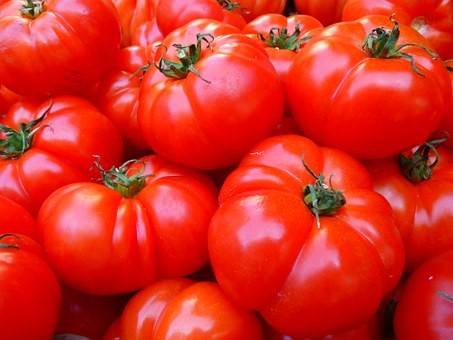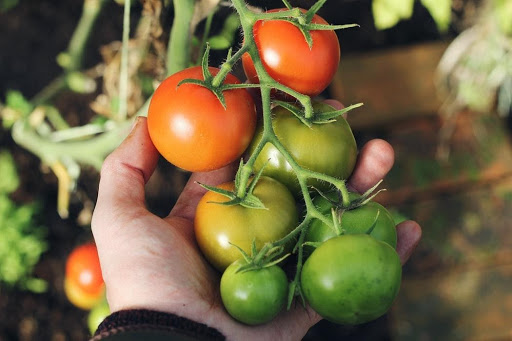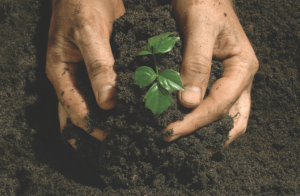
There’s nothing better than picking and eating a ripe and juicy tomato, sun warmed and straight from the vine. Tomatoes can be one of the easiest and most rewarding home crops to grow – they even do well in hanging baskets! And with recent supermarket and supply shortages they can be a useful crop to have growing in your garden or on your windowsill. If you’re new to growing tomatoes here are some of our team’s top tips.
Getting started
Choose a good variety or try growing different ones. Think about how you plan use or eat your tomatoes – you may prefer them in salads, or want to use them for cooking and sauces. There are hundreds of tomato varieties, from marble-sized grape or cherry to juicy salad options and huge, sweet, beefsteak types. Their colours range from deep crimson to orange, yellow, green, purple, and even chocolate. Sow your seeds in the early spring – March or April is perfect as the weather starts to warm up.
Prepare ahead
To avoid the risk of disease and blight as much as possible, don’t use garden soil to fill your seed pots as it may have bacteria living in it. Instead, opt for a free-draining, fluffy peat-free mixture. Try our 10mm Soil Conditioner – it’s ideal and will have all the nutrients you need for healthy, juicy tomato plants.
Once the seedlings have emerged and grown up to 2-3cm, pot them on, before transferring them to a larger pot or grow bag when ready. But do keep them indoors or in the greenhouse until the risk of frost has passed.

Tomato Growing Tips
Positioning
Tomatoes enjoy a sunny position with a minimum of six hours of sunshine a day and plenty of water. Don’t forget to feed them once a week once the first flowers appear.
Pruning and Training
Pruning and training are vital for improving airflow, increasing light penetration, and controlling plant size. Pinch off the suckers (the little shoots that sprout in the leaf axils) using your fingers. Stakes, cages, or trellises can be used to support the plants and keep them from spreading. Tie the main stem to the support structure on a regular basis with soft plant ties.
Summer Growing
If you are growing in a greenhouse, take care that the plants don’t suffer from excessive heat; you may need to shade them if the summer is particularly long and hot.
Pests and Diseases
Aphids, tomato hornworms, and whiteflies are common tomato pests. Inspect your plants on a regular basis for symptoms of infestation and take appropriate action. Encourage natural predators like as ladybirds and lacewings and, if required, employ organic pesticides. Remove affected plant sections and consider applying organic fungicides if diseases such as early blight or late blight develop.
Tomato Watering Tips
Watering tomato plants on a regular and consistent basis is essential. Water thoroughly and on a frequent basis to keep the soil evenly moist but not waterlogged. Overhead watering should be avoided since it increases the danger of diseases. Instead, use a soaker hose or drip irrigation system to distribute water to the plants’ roots. Watering in the morning allows the leaves to dry over the day, lowering the risk of fungal diseases. Don’t worry if your tomatoes look a little dry, give them a bit of water and they’ll soon perk up!
Harvesting
It will usually take about 9-10 weeks for your first crop of fruit to be ready. Harvest tomatoes when they have reached maturity and are firm but not hard. Remove the fruit from the vine by gently twisting or cutting it, leaving a tiny stem attached. Allow tomatoes to fully mature on the vine for the finest flavour. If frost is expected, pick green tomatoes and ripen them indoors in a warm place away from direct sunlight.
Earth Cycle
We hope these tips on growing tomatoes has helped. If you are in need of some topsoil, compost or other gardening accessories to help you with your tomato growing, Earth Cycle has everything you need!



